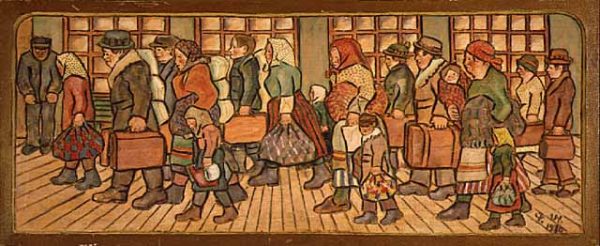
Originally posted April 10, 2017.
From Trump’s attempted restriction on immigration to his talk of building a wall on the country’s southern border, immigration policy has received renewed attention among both politicians and the public. A common reason for restricting immigration flows is association between immigration and crimes, which was explicitly mentioned by Trump along the campaign trail. Social science agrees that immigration and crime are interconnected, but not in the way Trump and others claim.
Individual level data show that immigrants are actually less likely to engage in violent behavior than non-immigrants, with first generation immigrants being the least likely to commit crime as compared to second or third generation immigrants. Similarly, studies also find that areas with high proportions of immigrant residents are associated with lower levels of neighborhood violence and drug-crime when compared to similar neighborhoods with fewer immigrants. This association is best explained by the increases in social organization — culturally-based buffers like strong familial and neighborhood ties — and the associated economic gains stimulated by the influx of immigrants.
- Robert J. Sampson, Jeffrey D. Morenoff, and Stephen Raudenbush. 2005. “Social Anatomy of Racial and Ethnic Disparities in Violence.” American Journal of Public Health 95(2): 224-232.
- Lesley Williams Reid, Harald E. Weiss, Robert M. Adelman, and Charles Jaret. 2005. “The Immigration– Crime Relationship: Evidence Across US Metropolitan Areas.” Social Science Research 34(4): 757- 780.
- Tim Wadsworth. 2010. “Is Immigration Responsible for the Crime Drop? An Assessment of the Influence of Immigration on Changes in Violent Crime Between 1990 and 2000.” Social Science Quarterly 91(2): 531-553.
- Graham C. Ousey, and Charis E. Kubrin. 2009. “Exploring the Connection Between Immigration and Violent Crime Rates in US Cities, 1980–2000.” Social Problems 56(3): 447-473.
This association between immigration and lower crime rates is stronger in areas with more opportunities for immigrant political action. Cities with higher levels of minority political representation and pro-immigrant legislation enhance the buffering effect of immigration on both homicide and robbery.
- Christopher J. Lyons, María B. Vélez, and Wayne A. Santoro. 2013. “Neighborhood Immigration, Violence, and City-Level Immigrant Political Opportunities.” American Sociological Review 78(4): 604-632.
What’s troubling is that even though immigrants and the areas they inhabit are associated with lower levels of crime, both documented and undocumented individuals are more likely to be incarcerated and receive longer prison sentences, even when controlling for race/ethnicity, crime severity, and other factors.
- Michael T. Light, Michael Massoglia, and Ryan D. King. 2014. “Citizenship and Punishment: The Salience of National Membership in US Criminal Courts.” American Sociological Review 79(5): 825-847.

Comments